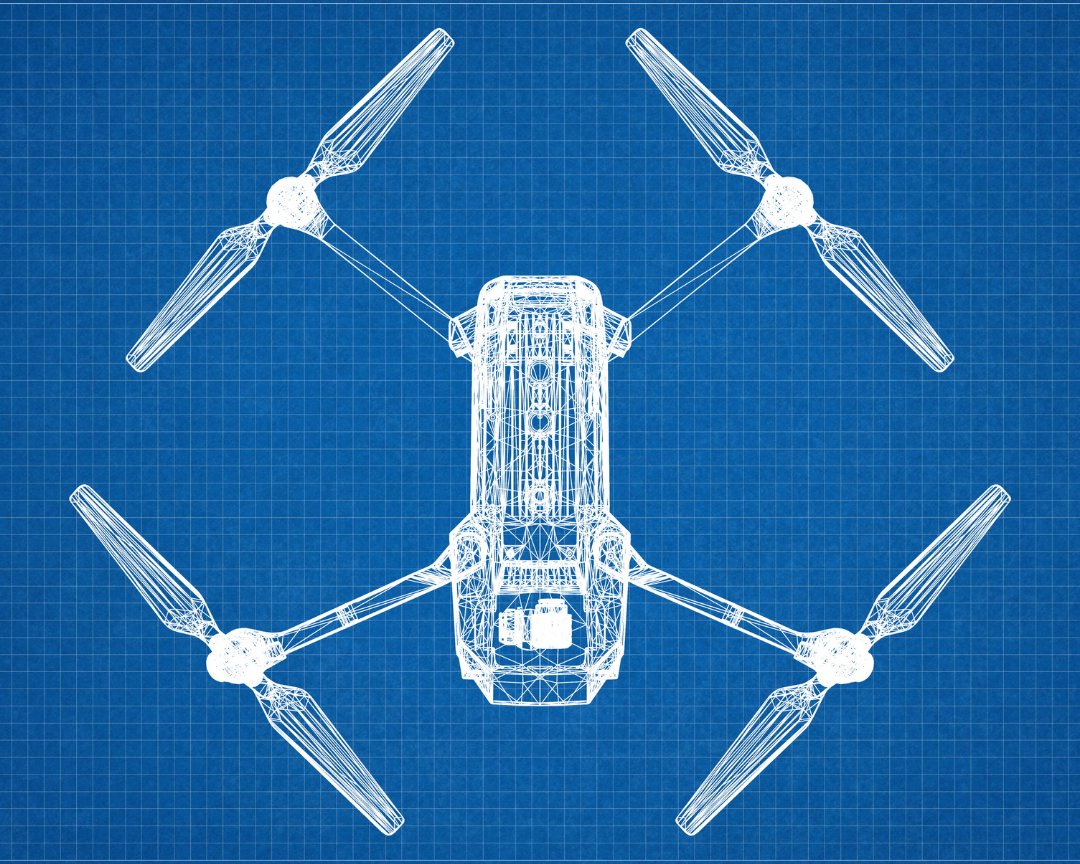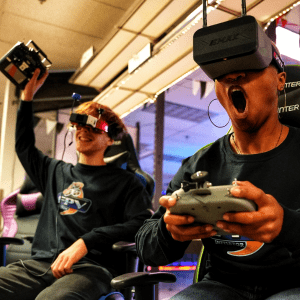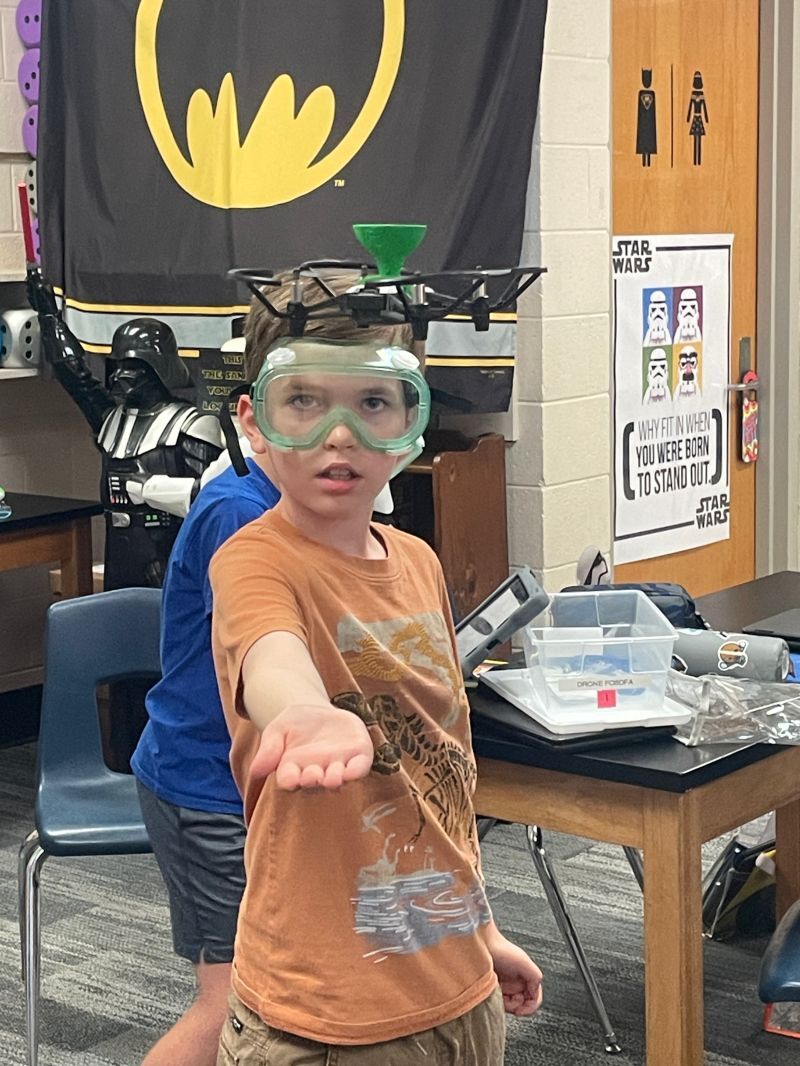Microdrones: they’re drones, but smaller. And while smaller often means less functional, in this case, that could not be further from the truth.
The affordability, convenience, and versatility of microdrones have resulted in numerous innovative solutions for problems facing professionals in many different industries. From disaster management and environmental monitoring to surveillance and education, these drones prove that good things come in small packages.
At Drone Legends we believe that, when it comes to fostering creative and impactful technology use in the next generation, the sky is the limit for every child. Contact us to learn more about integrating our drone-based curriculum in your local school, summer camp, or afterschool program.
Curious to learn more? Keep reading for more information about the different applications of microdrones.
What are Microdrones?
Microdrones are a subset of unmanned aerial vehicles (UAVs) that are smaller than their traditionally-sized counterparts. They typically integrate features such as cameras and sensors into their design in order to provide users with a unique vantage point for making observations about various landscapes and environments.
Who are Microdrones Good For?
Aside from consumer recreational use, microdrones have a variety of applications that are valuable to professionals in various fields. Let’s take a look at some of the common uses of microdrones.
Environmental Monitoring
Since microdrones are intended for photo and video capture, they are a fantastic tool for environmental monitoring. Scientists and engineers can use microdrones to capture unique footage of an area’s ecosystem, topography, animal population, weather conditions, and more.
Advanced technology allows the camera equipment on microdrones to produce high-resolution videos and images that can be used to provide immediate and robust information. The footage captured by these tools is significantly better in quality and is far more convenient than using a traditional camera from a plane or helicopter.
Microdrones can even be used to capture and transmit real-time footage, which is invaluable to any projects that involve time-sensitive or rare sightings and encounters.
Different environmental monitoring uses for microdrones include:
- Forest health and wildfire risks
- Agriculture production and damage
- Snow volume and avalanche risks
The data captured by microdrones can later be used in algorithms that predict environmental risks and damages, resulting in better disaster preparedness.
Surveillance
Law enforcement and other emergency services use microdrones for surveillance and safety monitoring. It might sound strange, but it can actually result in safer law enforcement for all parties involved. Surveillance and monitoring of restricted spaces, private properties and public events could reduce the risk of altercations, injuries, property damage or violence.
The way microdrones help in law enforcement efforts is by transmitting live footage of the areas of interest. Sensors on the drone can trigger the recording which will capture crimes as they occur. This can not only alert law enforcement to the incident in order to prevent it but it can also provide legal professionals with evidence for a more fair trial.
Disaster Management and Response
Disaster management involves a wide range of tools and team specialties in order to collaborate to solve some of the most urgent issues facing an impacted community. Drones can aid in disaster relief efforts in a number of ways.
Microdrones in specific are able to provide organizers with a comprehensive view of the conditions of an area in order to equip a team with all the knowledge they need to provide the best aid possible.
The most advanced microdrones are even able to detect humans or other specific objects. Using a high-tech classification system, these tools are essential for search and rescue efforts as well as risk assessments.
Microdrones and Education
Educators have been employing drones and other robotics in their curriculum because of their ability to provide engaging and relevant hands-on learning experiences to kids who are interested in STEM. They incorporate robotics, electronics, and autonomous flying vehicles, which are all incredibly interesting for children.
Not only do these students love learning about drone technology and operating drones in an educational setting, but they also enjoy enhanced employability later in life.
Microdrones and Drone Racing
Drone racing combines flight simulation with drones. Microdrones are typically used in drone racing due to their cost effectiveness and maneuverability. Using VR headsets, pilots race their vessels while the footage from the race streams on a screen that an audience can enjoy.
Drone racing has become a popular pastime because it is a low-impact and fun sport-like activity. Competitions take place in massive venues and large crowds gather to cheer on their favorite pilot.
Best Microdrones for Kids
If you want to buy a drone for your child, be sure to review all the details and information about safety and local regulations. In general, drones are a safe and fun way for your child to engage with technology, but many metropolitan and conservation areas restrict their use. It’s important to understand all operational rules before taking off.
The most popular drones for kids are the DJI Mini 2 or the Ryze Tech Tello. Both are small, affordable, and easy to operate, making them ideal for first-time and young users. Children can use drones to capture aerial footage of their neighborhood and race with their friends.
It is a fun way for children to practice responsibility, as drones are expensive technology that requires the proper operation to avoid damage.
Learn Drones With Drone Legends
Drones are providing a variety of exciting and innovative solutions to some of our most difficult problems. Teaching your child about drones will not only help improve their classroom engagement, but it will also provide them with employable STEM skills development.
At Drone Legends, we offer a drone education curriculum for this exact reason. Contact us to learn more about our curriculums for school programs, summer programs, and weekend courses.




